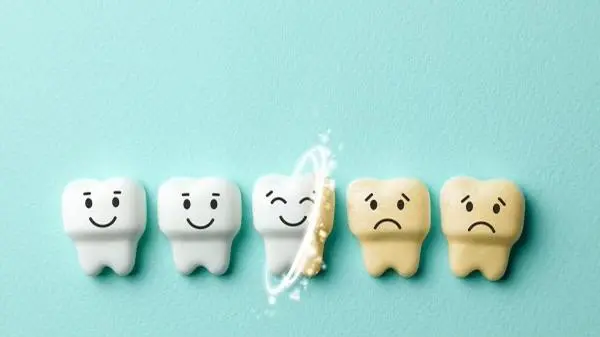Numerous social media tutorials have surfaced in recent years claiming to deliver amazing results with DIY teeth whitening methods. Do they actually work? Are these methods science or fad?
There are two types of whitening: extrinsic and intrinsic. Extrinsic whitening uses mild abrasives to remove surface stains in order to reveal the natural color of the teeth. Extrinsic whitening is commonly used to remove food and beverage stains. Internal staining caused by trauma (for example root canal failure), or white stains from braces requires intrinsic whitening, which utilizes a bleaching agent to change the color of the enamel.
Acidic fruits like strawberries and lemons are touted as effective DIY teeth whitening agents. The reason is that acids actually “whiten” your teeth by drying them out; dryer teeth appear whiter. Once your teeth rehydrate, however, they will return to their normal shade. Worse yet, prolonged and frequent exposure to acids in the fruit can permanently damage your enamel!
Teeth whitening toothpaste, including charcoal-based toothpaste, can remove surface stains, but be cautious of the abrasivity of these toothpastes as they can lead to the thinning of your enamel. A less abrasive and inexpensive DIY alternative is a mixture of 1 part baking soda (sodium bicarbonate) and 2 parts water. We also recommend using an electric toothbrush as it removes stains more effectively than manual toothbrushes.
Two types of bleaching agents are commonly used to whiten teeth intrinsically: hydrogen peroxide and carbamide peroxide. Hydrogen peroxide works faster at lower concentrations but also loses its effectiveness after about 30 minutes. Carbamide peroxide acts like a “slow release” form of hydrogen peroxide and can stay effective for 6-8 hours.
Peroxide-based OTC whitening strips such as Crest 3D Whitestrips are readily available OTC and easy to apply. The strips can be placed over the teeth for 30-60 minutes during each application. You can begin seeing results after a few days and up to a couple of weeks. Though higher concentrations of hydrogen peroxide yield better and faster results, it can also lead to teeth sensitivity and soft tissue damage if the gel comes into contact with the gums, tongue, and cheeks. Some whitening kits come with a light that claims to activate the gel. Studies have shown that the light makes no difference to the outcome of bleaching.
A common complaint about whitening strips is uneven whitening – that is, the teeth are white at the front surface but dark in between since it is difficult to get the strips into the crevices of the teeth. If there is significant rotation and overlap of your teeth, the strip may not adhere to the teeth effectively, and hence, a custom tray with prescription strength bleaching gel is a much better option.
Whitening gel trays are custom-made based on a digital scan of your teeth. Once made, you can continue using the same trays as long as there is no movement of the teeth. The trays are flexible and provide even, full coverage for the teeth. Moreover, the trays create a border that goes above the teeth so that the whitening gel does not seep into the surrounding soft tissue and cause irritation. The prescription strength whitening gel can be purchased at your dentist’s office and stored in the refrigerator for an extended period. When ready to use, squirt the gel into the tray and gently place over your teeth for 1-3 hours. Since the concentration of at-home whitening gel is lower than that of in-office professional whitening gel, it may take longer to achieve the desired results. On the upside, however, lower concentration bleaching gel is more forgiving to those who have sensitive teeth. If you experience sensitivity, stop the treatment for a few days then resume. In the meantime, use an anti-sensitivity toothpaste or put the toothpaste in your bleaching trays and wear it for prolonged contact to help relieve sensitivity.

